How to Paint Oil Landscapes/Seascapes
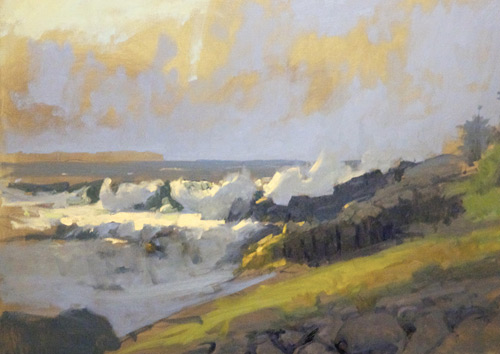
Painting Seascapes with Atmospheric Progression
with John P. Osborne
There’s a formula of sorts for determining the subtle atmospheric progression of colors and color values. “No matter what we’re painting and how important the figure, still life or landscape,” Osborne says, “there’s a light average value and a shadow average value, and when you add the halftone between the two, or the middle value of the palette, you have form. You can’t create the illusion of light or bring your canvas to life without form.” Follow along in this landscape painting tutorial as John P. Osborne explains how to paint landscapes or seascapes.

Step 1: Toning the Canvas
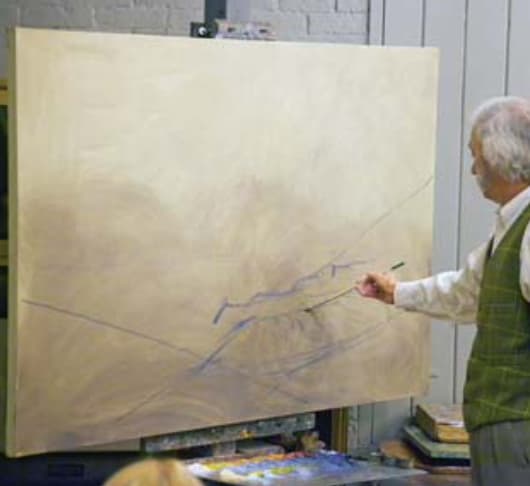
I usually tone my canvas with a sunlight tone — warm gray (ivory black, white and a little orange); after you put shadow in, what’s left is a sunlight tone. Here I began a quick placement sketch and established the highest light somewhere about one-third up and in, on the canvas. Aside from that, as a gesture, this allows me to figure out how to get the eye moving in and out of the canvas.
Step 2: Starting with the Clouds

In this case, since the sky takes up a major portion of the painting, I placed it first. Starting with the shadows of the clouds, I used a mix of cobalt blue, ivory black and white.
Step 3: Mixing in Rocks
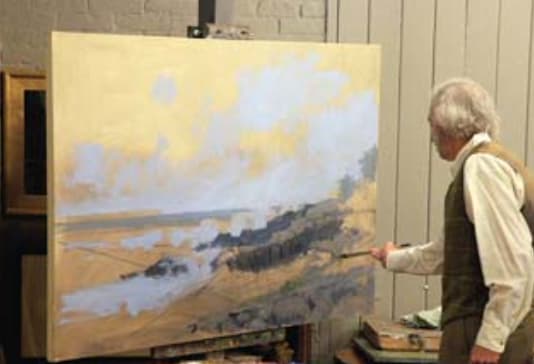
After laying in the shadow parts of the sky, using the same colors as in step 2, I next mixed a darker value to lay in the rocks.
Step 4: Adding Color Value

Once the rocks were in place, I began to address the green foreground by putting in some of the color to represent the beginnings of sunlight in the value of cadmium yellow deep (sunlight gray, black and white, ultramarine blue, cadmium yellow light). I also added a few darker accents.
Step 5: Laying the Sky

I next began to lay in the clear part of the sky. You can see how the toned canvas helps in the progression. If I think it works within the painting, I’ll let some of the tone show through and even allow some of it to be left undisturbed.
Step 6: The Highest Light
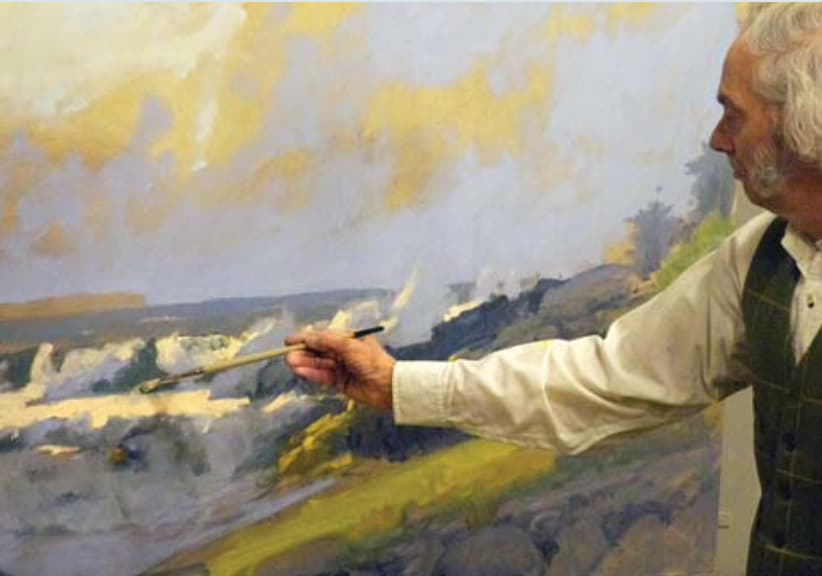
Finally I applied the highest light. At this point, if the values are in the right place so that the highest light reads true, you won’t have to repaint everything you’ve done. This is the major advantage of working with a prepared palette.
Step 7: Finishing Touches
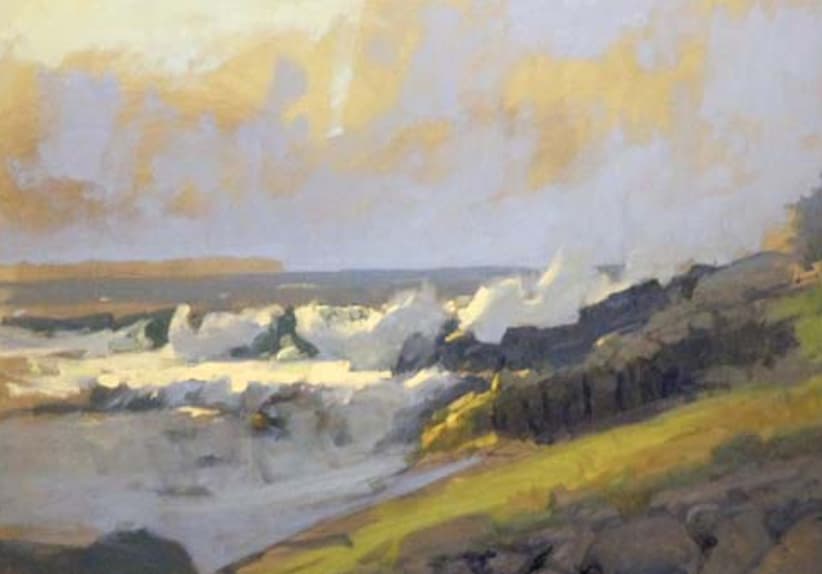
I painted this piece as a demonstration. As such, I took it as far as I could in the time allotted. After the demonstration, my goal was to try to bring it to a finish with the same enthusiasm and excitement that I began with. Over the following several weeks, I looked at it more critically and made subtle changes, but fundamentally Harpswell Island (oil, 44×60) was set.
Landscapes Continued!
Painting landscapes in every season is a rewarding experience. Enjoy this video mini-workshop on summer landscapes and what to seek out in the lights and shadows of a summery green scene.
Meet John P. Osborne
A graduate of Pratt Institute in New York City, John P. Osborne taught at the Ridgewood Art Institute. The former student of Albert Alban and Arthur Maynard is a recipient of the Hudson Valley Art Association’s highest honor: Artist in Special Tribute. His award-winning paintings are exhibited at the American embassies in Europe, Africa, Asia and South America and in various national galleries from coast to coast. Learn more at johnphilliposborne.com.
A version of this article originally appeared in Artists Magazine. Demo photos by Kate Faust. .
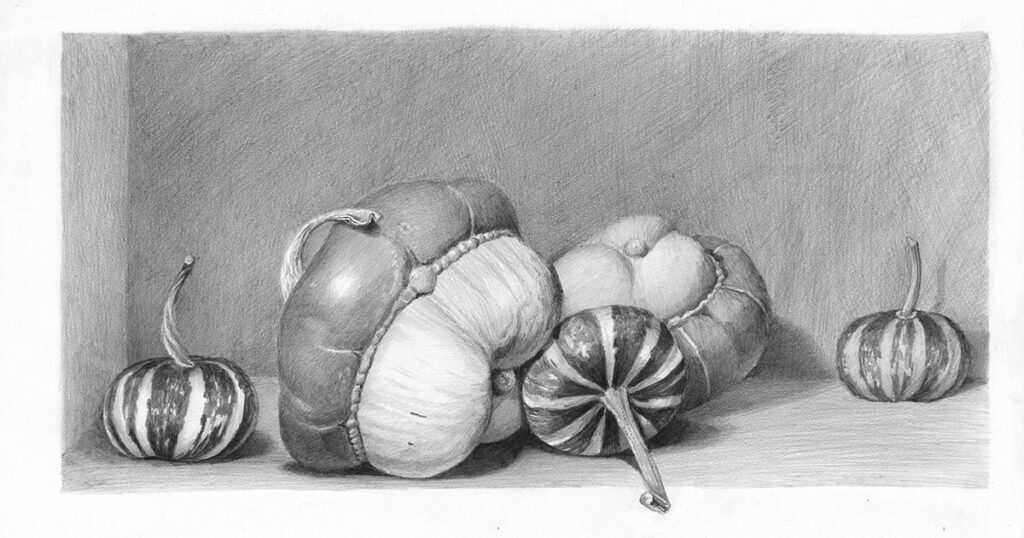
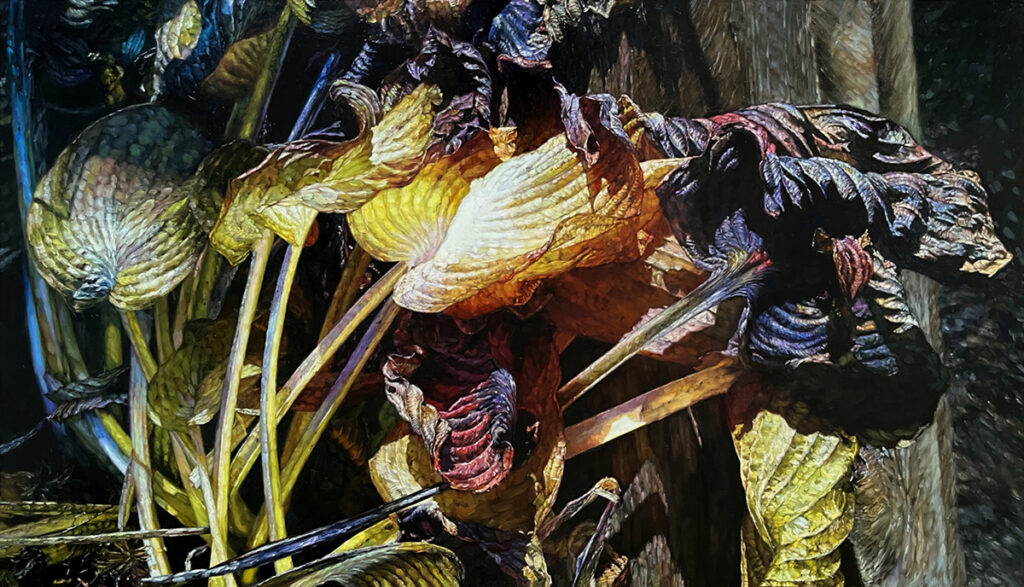
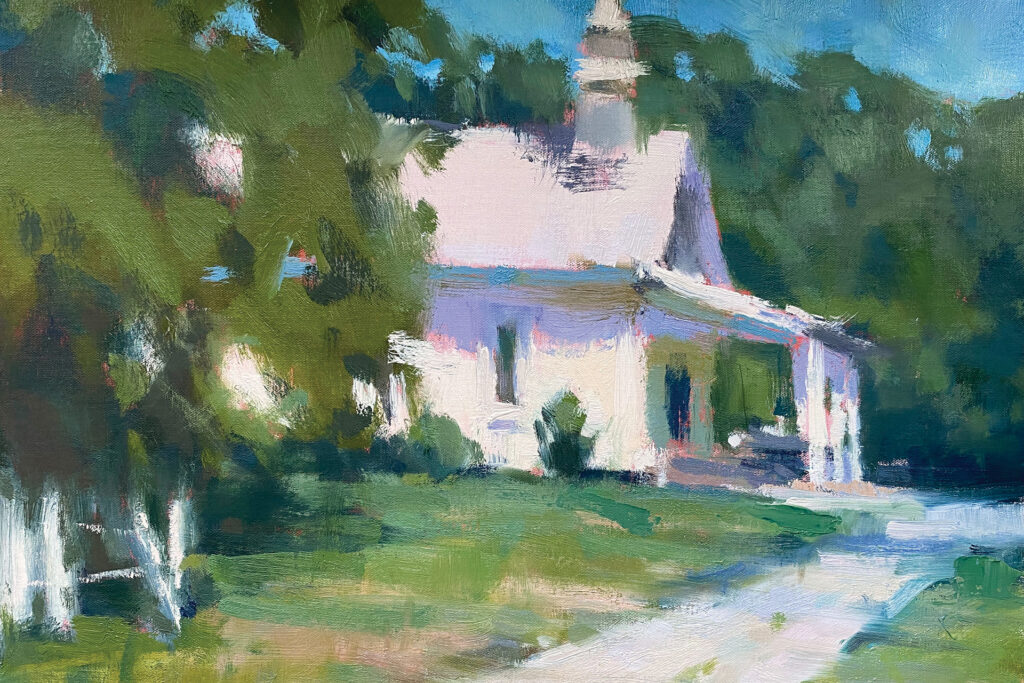
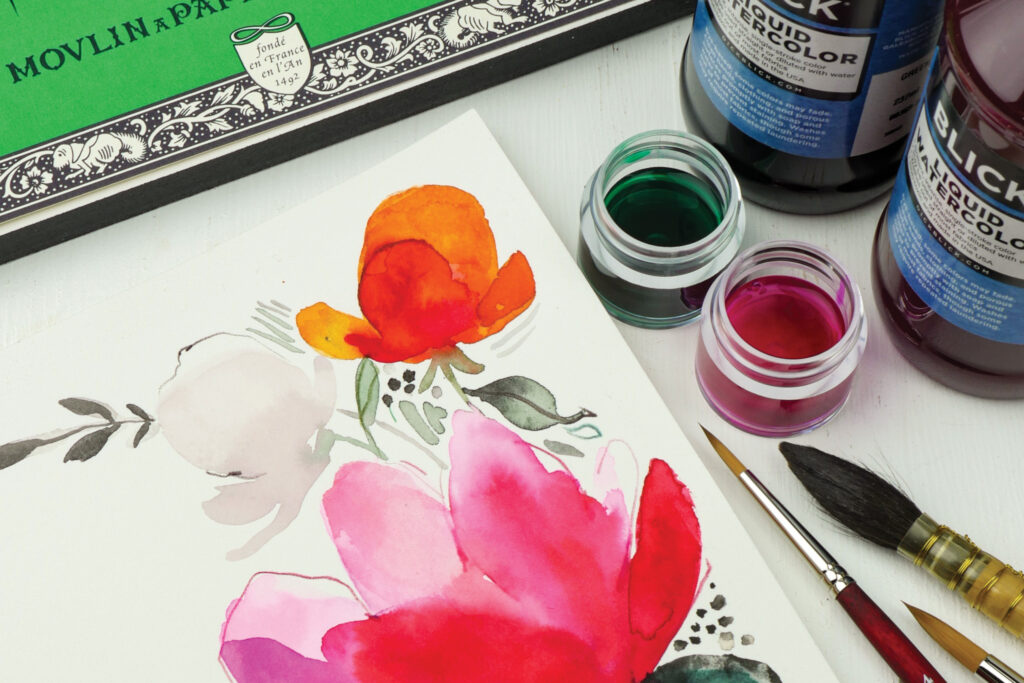

Good article can bring a lot of useful knowledge to users. I am also doing landscape oil painting and thanks to your article I can study under. Thank you for the article and I also have some of the landscape paintings that I drew in vietnam to bring to you abroad
Great post, would be extremely useful for beginner artists even though the actual painting is quite complicated. The demonstrator is very talented!
I did a similar landscape tutorial, however it was a bit more of a floral landscape.
Love the written narration’s on the steps as well, paints a very clear picture 😉